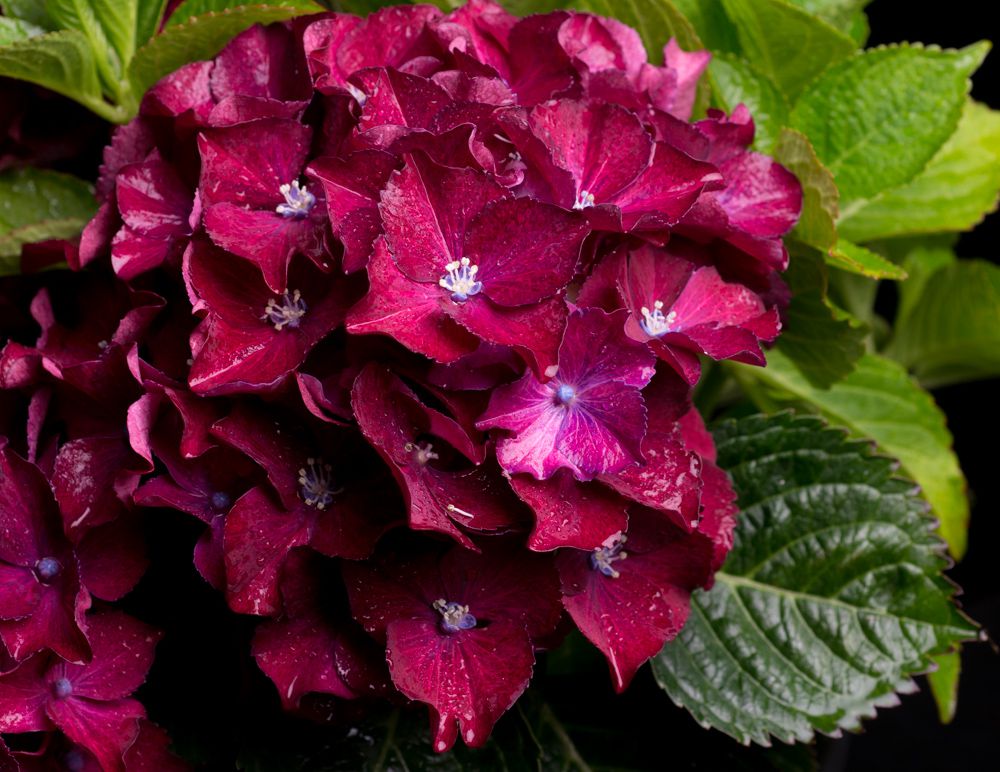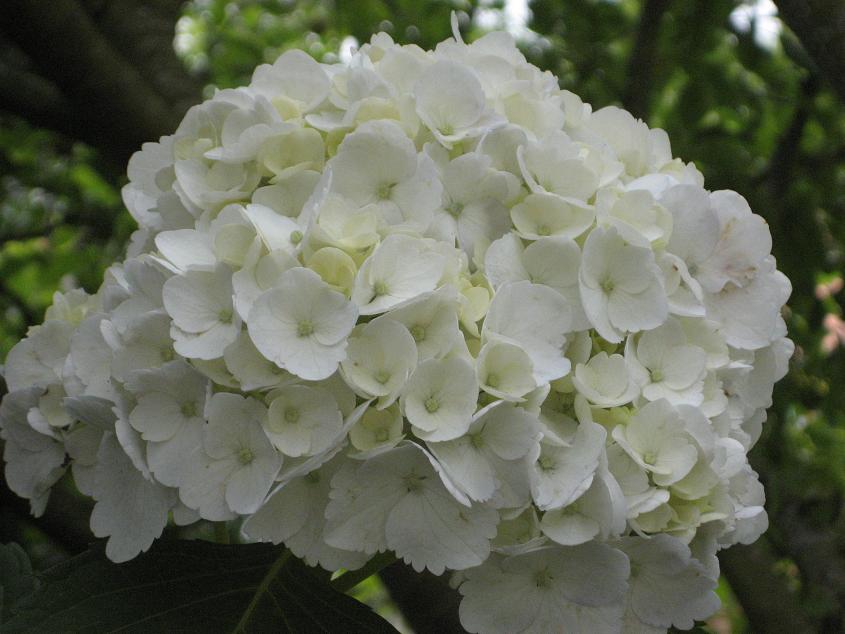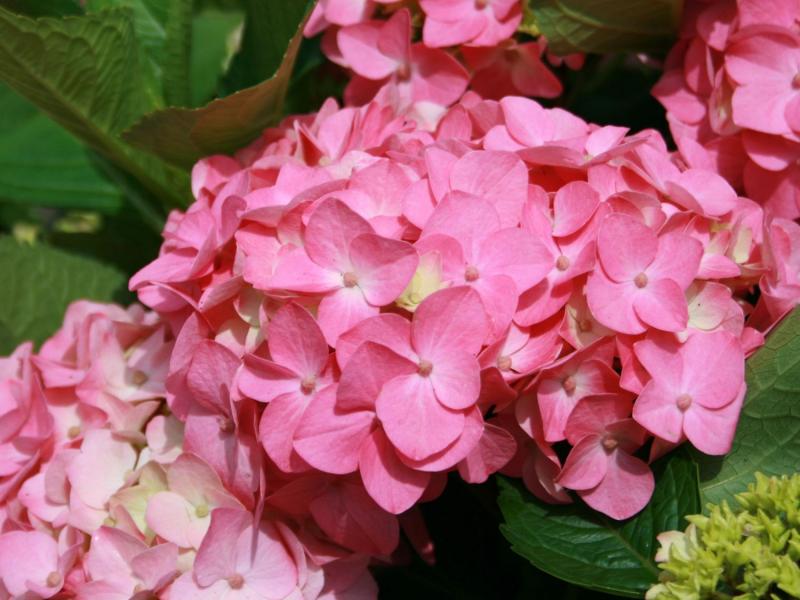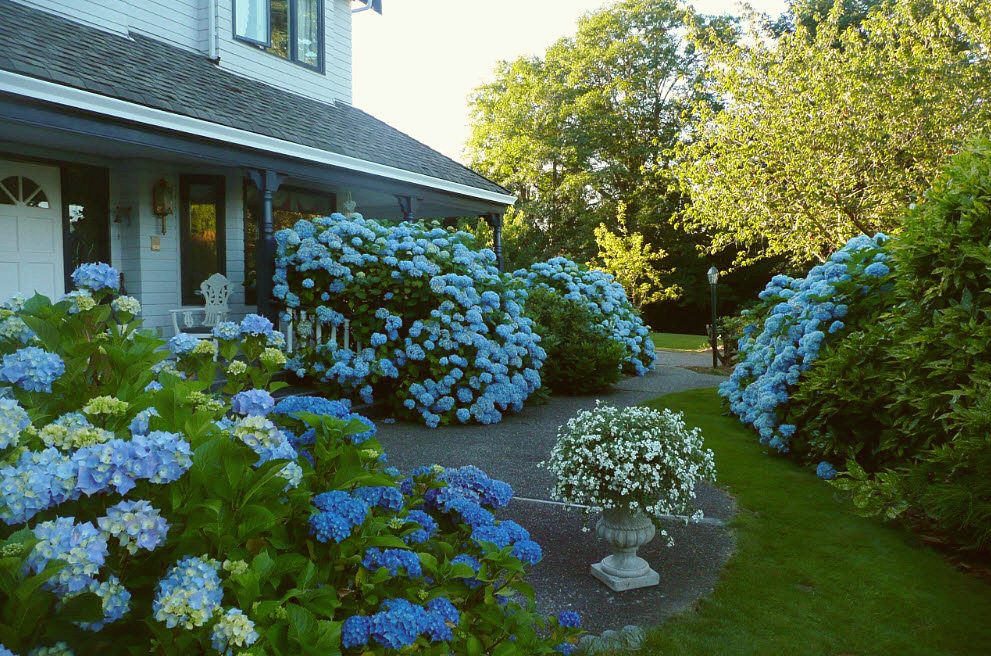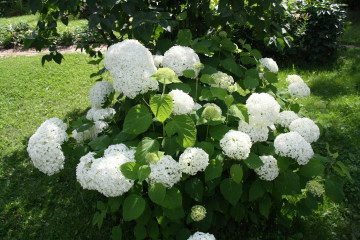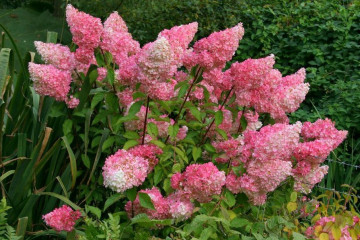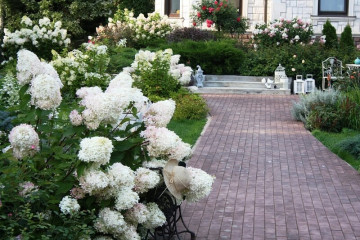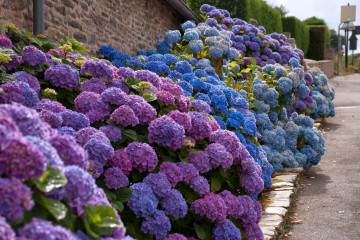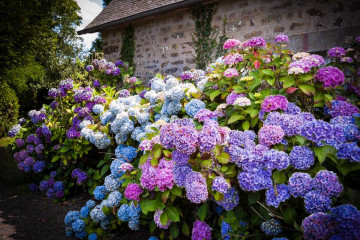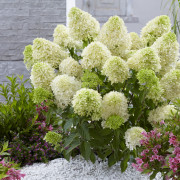Large-leaved or broad-leaved hydrangea - outdoor care
Content:
- Description of large-leaved hydrangea
- Varieties and varieties of hydrangea for the Moscow region, the Urals, Siberia
- Planting large-flowered hydrangea outdoors
- Broadleaf hydrangea care
- Reproduction
- Diseases and pests
- Is it possible to grow a macrophile hydrangea at home
- The use of broadleaf hydrangeas in landscape design
Amazing hydrangea flowers clearly outperform other ornamental garden plants. The graceful balls of its inflorescences have a rich palette and attractive lightness. Broad-leaved hydrangea bushes are often included in landscaping, since the plant does not require complex molding and scrupulous care. To grow a lush specimen on your site, it is enough to know the basic rules of planting, care and combination with other plants.
Description of large-leaved hydrangea
Large-leaved hydrangea (Hydrangea macrophylla) is one of the most common garden shrubs of the Hydrangia genus. Already by the beginning of the twentieth century, excellent results were achieved in breeding in cultivating and increasing the resistance of lush bushes. Modern scientists have significantly increased the frost resistance of the plant, the duration of its flowering and developed unique varieties with a fabulous color and shape of buds.
Origin
A magnificent flowering shrub was presented to the world by Japan, it began to spread throughout Asia and America. In Europe, the fashion for hydrangea was introduced in France, starting to decorate gardens and courtyards with airy flowers.
Since the plant is thermophilic, at first it was difficult to grow it in Russia, but over the past century, stable and unpretentious varieties have been bred, which also delighted northern gardeners.
Features of a garden flower
General characteristics for the type of hydrangea, macrophylls, describe a shrub with an average height of 25 to 150 cm, growing in a ball and having a well-branched root system.
The bush blooms annually, throwing out lush inflorescences-caps for 2-4 months. With each season, the density of the buds becomes denser, some varieties acquire a semi-double and double appearance. Stems are added every year from 25 cm, so the macrophile hydrangea is described as a fast-growing shrub.
The leaves of the plant are smooth, juicy, dark green, sometimes serrated. They resemble an egg, lilac or blackberry crown, depending on the variety. Some varieties take on a red or bluish tinge in the summer during flowering and in the fall, before shedding their foliage.
Advantages and disadvantages
To understand whether it is worth planting a hydrangea on your site, it is enough to weigh all the advantages and disadvantages of an ornamental bush:
- One of the main advantages of hydrangia over other garden flowers is the richness of the palette. Hydrangea is so diverse and attractive that it easily displaces other shrubs common in temperate latitudes.
- Another plus is the duration of flowering. Inflorescences remain fresh and lush for up to 4 months.
- The flower is versatile, there are varieties grown in tubs, in greenhouses and conservatories, as well as homemade varieties.
- The plant does not emit a smell, therefore it does not cause allergic reactions.
Among the relative disadvantages are the sensitivity of the flower to growing conditions and the need for proper care.
Winter hardiness
The large-flowered hydrangea cannot be called a frost-resistant plant. Usually, bushes are wrapped in a greenhouse for wintering, but in warm regions such a flower may well survive frosts down to -10, or even -18 ° C. There are also special varieties bred specifically for the harsh northern climate.
A feature of the species is the laying of flower buds in the fall, before the onset of cold weather. Therefore, even hardy varieties should not be severely tested at low temperatures and the plant should not be properly cared for.
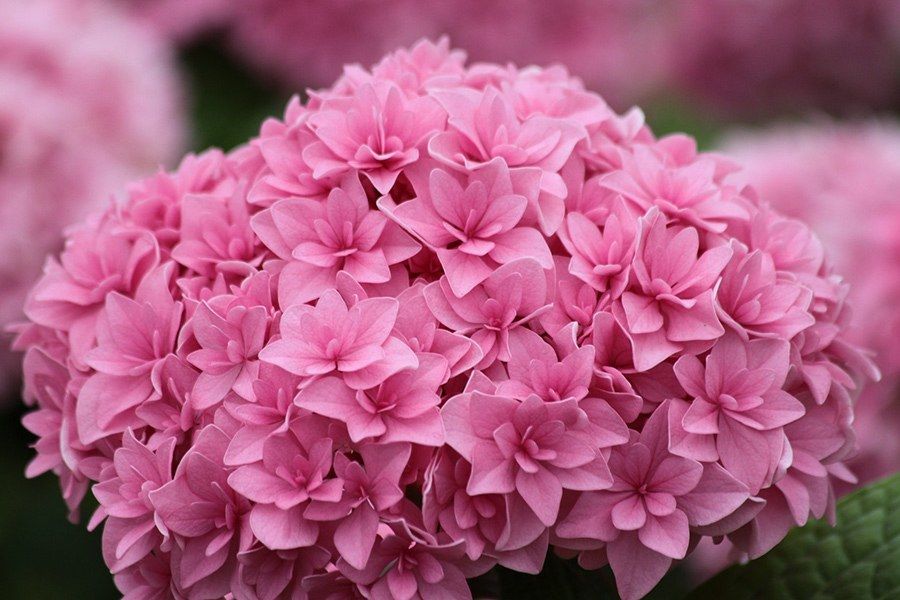
Hydrangea Romance Pink belongs to the easily wintering varieties and delights with its delicate beauty.
Influence of soil acidity on the shade of flowers
The acidity of the soil amazingly transforms the hydrangea. The flower loves acidified soils and in such conditions reveals all the richness and beauty of the shade. This is especially true for red and bright pink flowers. In neutral mixtures, the macrophile can divert the range of its inflorescences to the lilac and blue sides, make them less catchy.
In an alkaline environment, hydrangea withers, may stop blooming or start throwing out faded and unsightly inflorescences. One bush sometimes gives out a variegated range in its bouquet, depending on the characteristics of flower feeding. With careful care and little experimentation, hydrangeas can bloom differently each year.
Varieties and varieties of hydrangea for the Moscow region, the Urals, Siberia
Taking into account the global warming trends, gardeners of the middle zone (Moscow region) can safely start hydrangea varieties with medium frost resistance on their plots.
Residents of the Urals and Siberia need to pay attention to 2 factors:
- high frost resistance of bushes - from -18 ° С to -40 ° С;
- remontant varieties - those in which flowers are formed not only on last year, but also on fresh summer shoots.
It is the repair factor that allows hydrangeas to calmly survive the winter in Russia and other northern corners of the world. The bush blooms regularly, even if it was exposed to freezing and snowfall - and last year's branches did not bloom.
Recently, new refined varieties suitable for cultivation in the Moscow and central regions of Russia have begun to gain immense popularity.
Popular varieties of winter-hardy hydrangea
The Shnibol variety is a delicate white flower with a beautiful fringe on the edges of the petals. It is stable, withstands up to -23 ° C without shelter, but at the same time it requires enough light, the correct composition of the soil and constant care with fungicidal agents.
Among the pale pink samples, Romance pink can be distinguished - an amazing variety that resembles the shape of its semi-double lotus buds. This hardy species can bloom through fresh summer shoots.
Earley pink is a unique pale pink flower with greenish stripes, a novelty in the world of floristry with average winter hardiness.
Another pink large-leaved hydrangea, a raspberry representative of the species - Masya is a true long-liver: it blooms for more than 50 years in a row under any conditions, is resistant to frosts down to -23 ° С, effective and beautiful.
In the red line, Red Baron is popular - a rich flower with an average winter hardiness and a flowering duration of up to 30 years, Royal Red is an interesting specimen blooming on current shoots, as well as Maman Rouge - a medium-resistant, beautifully changing the shade of its inflorescences from crimson-red to lilac-purple , depending on the composition of the soil.
A rainbow variety called Schloss Wackerbart, which has crimson petals with lemon inclusions and a magical blue core, can be called unique in its kind. The fabulous specimen endures frosts down to -18 ° C, which is permissible for Moscow, and does not degenerate for about 50 years.
In addition to useful remontant varieties of the You & Me, Forever & Ever and Howaria series, there are Grand Flora, Invincibell Spring, So Long Rosie and Hot Red, valuable for the northern regions, that can withstand frosts at -30 ..- 40 ° С.
Planting large-flowered hydrangea outdoors
Large-leaved hydrangeas provide planting and care in the open field. Choose a sufficiently lit place on the eastern side of the site at least one and a half meters from buildings and other plants. The soil is drained and acidified. The transplant is carried out in spring or autumn at a time of steady heat.
Broadleaf hydrangea care
Hydrangea loves abundant watering and moderately nutritious soil. It is enough to periodically process the soil with iron, peat and humus, as well as provide mulching from coniferous sawdust. The soil should always be loose to ensure the breathing of the root system.
Reproduction
Reproduction of hydrangeas is often done by dividing overgrown bushes and germinating cuttings. Seed work is usually done by professionals; it takes much longer to form an independent bush than with ordinary breeding methods for amateur gardeners.
The division is best done in the fall, germinate the shoots in the warmth, and transplant the bushes into open ground in the spring. This increases the likelihood of their successful acceptance.
Diseases and pests
Hydrangea is susceptible to invasions of parasites habitual for the garden - ticks, beetles, aphids, caterpillars. Sometimes sick with powdery mildew. Periodic preventive and therapeutic treatments with standard insecticides and fungicides will protect the bushes.
To avoid infections, you need to well clean the ground at the base of dry debris and weeds, and keep the mulch tidy. It is important to check the roots from time to time and adjust the watering intensity depending on their health.
Is it possible to grow a macrophile hydrangea at home
Some types of hydrangea grow well in large pots and flowerpots at room temperatures, without needing any fertilizers for a long time. In a small clod of earth, a compact bush will not gain a high growth rate and will take on a more squat, comfortable shape.
For home care, southern and neutral varieties are chosen. Already in the first stages of life, the bush will need a large flowerpot and enough space for top growth.
The use of broadleaf hydrangeas in landscape design
Macrophile hydrangea is widely used in landscape design to create coziness and airy lightness on the site. The plant fills the space favorably, making it more comfortable and chamber. At the same time, the subtlety, splendor and a certain solemnity of the inflorescences breathe the holiday atmosphere into the garden compositions.
The bushes do not need professional shaping and even without additional care they look delicate and elegant. Hydrangea is used in park compositions with other flowers, and is included in table and wedding bouquets.
Even Russian florists and gardeners can plant a hydrangea on their site today. It is worth trying at least one of the resistant varieties - the beautiful hydrangia will fill the garden with aestheticism.
